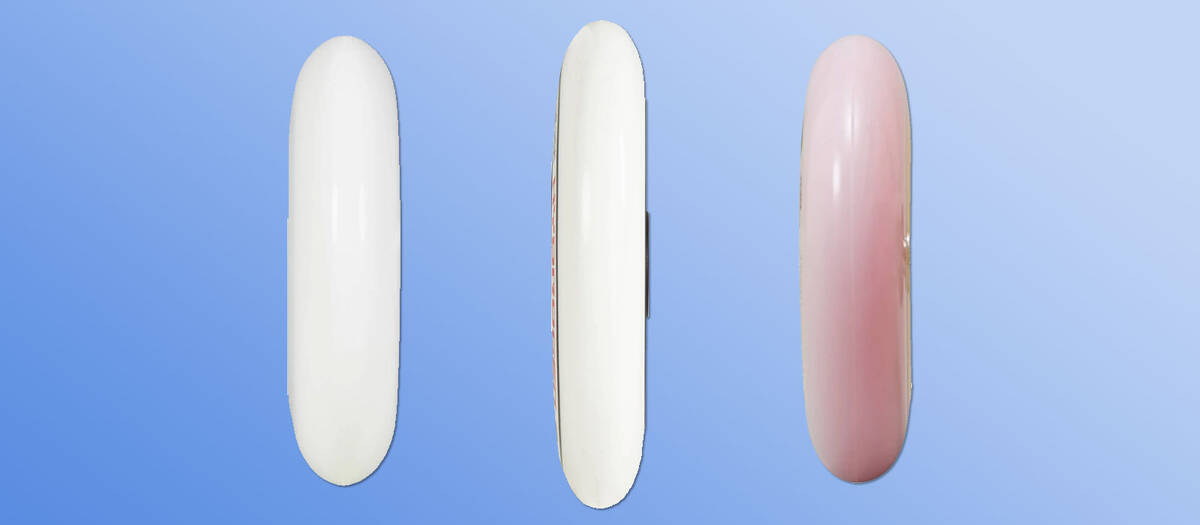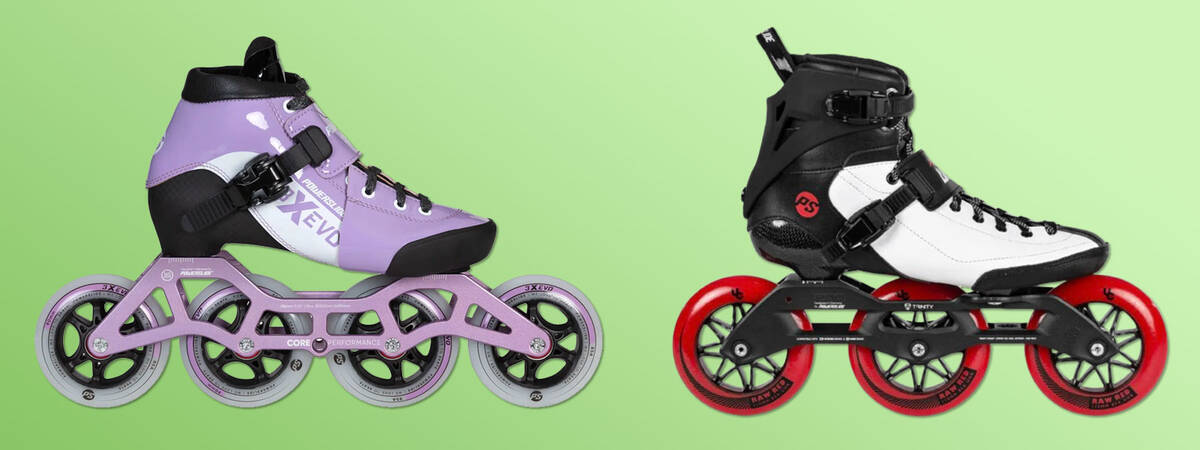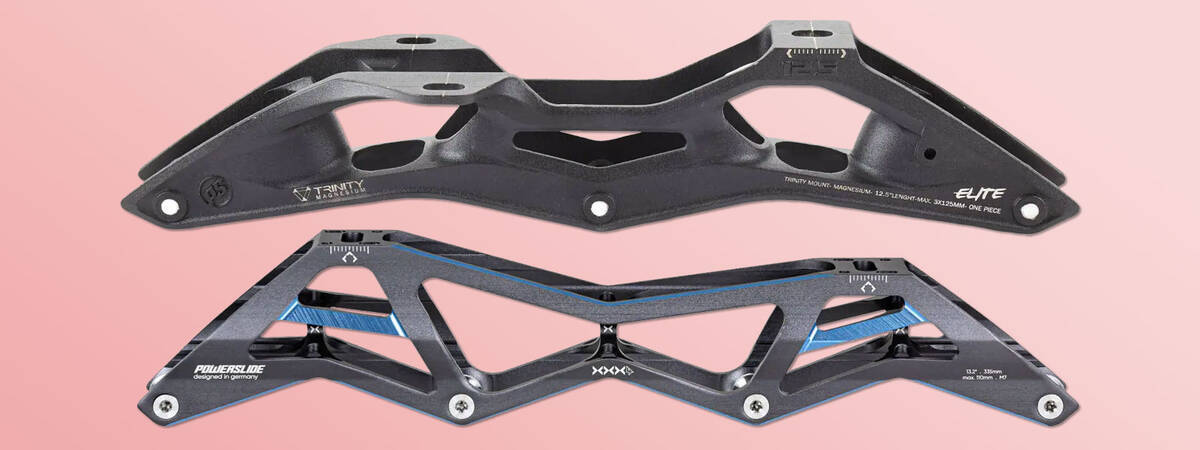Purchasing Speed Skates
Welcome to our guide on purchasing speed skates, where we delve into wheel size, bearings, boots, and frames. Choosing the optimal speed skates is crucial for performance. Whether you're just beginning or have professional experience, speed remains the focal point of speed skates, and this guide will inform you on what enhances their fast roll.
Your decisions will naturally vary based on the skating environment and the kind of speed skating you're interested in, but rest assured, we’re here to address the common inquiries you may have when selecting speed skates.
Overview
Essential Wheels for Speed Skates

For peak speed, inline skates with larger wheels are crucial. Let’s review the key aspects of speed skates' wheels. Most critical are wheel size and hardness, although wheel hubs and profile contribute to the skates' efficiency as well.
Selecting Wheel Size for Speed Skating
Typically, speed skating wheels are larger than those used for general recreation. Consider the following important tips when choosing wheel sizes for speed skates:
- 90 mm: Ideal for beginners and children, providing easy control due to a lower centre of gravity.
- 100 mm and 110 mm: Suitable for casual speedsters and competitors, these sizes ensure swifter movement.
- 125 mm: Chosen by marathon skaters to reach maximum speeds and handle long distances, often used in 3-wheel configurations.
In theory, and often in practice, larger wheels enable greater speed. Beginners may lack the skill for handling 110 mm or 125 mm wheels, making smaller wheels faster for them. Once adept at handling, larger wheels can achieve even higher velocities.
However, smaller wheels accelerate more rapidly. If you primarily engage in short sprints, avoiding 125 mm wheels is advised as they require more time to achieve their speed potential.
Reminder: Indoor or track racing does not permit 125 mm wheels.
Wheel Hardness in Speed Skating
The wheels designed for speed skating tend to be harder compared to those for recreational or fitness skating. This added hardness decreases friction, thus accelerating speed, but it does reduce grip and vibration absorption.
When considering the hardness of wheels for your speed skates, contemplate the skating conditions you'll face. Will you be outside on public roads, outdoor rinks, or inside on indoor rinks?
- Harder wheels: Provide higher speeds with reduced grip, vibration absorption, and friction.
- Softer wheels: Gain more grip, higher vibration absorption, increased friction, yet maintain high speeds.
On indoor rinks or smooth surfaces, harder wheels serve well. Conversely, if skating on rough, uneven roads, opting for softer wheels is advisable.
A standard wheel hardness for speed skates is around 85 A on the durometer scale.
Understanding Wheel Profile in Speed Skating

The profile of speed skating wheels is often pointed or narrow, minimizing contact with the surface, which reduces friction and boosts speed.
As wheels wear, the contact point with the surface enlarges and shifts outward due to the lateral motion of your stride. This is normal. We suggest rotating your wheels before this adversely impacts your skating.
Wheel Count in Speed Skates

In the realm of inline speed skates, models typically boast 3 or 4 wheels per skate. Earlier designs sometimes featured 5 wheels, yet modern options generally include 3 or 4 wheels.
- 3 wheels per skate: Skates with a shorter wheelbase are easier to manoeuvre and highly agile. Additionally, these allow for bigger wheels, which makes maintaining speed less demanding physically. However, they require greater technical ability and are not recommended for complete novices.
- 4 wheels per skate: With a longer wheelbase, these skates are less agile but offer improved stability. Beginners are advised to opt for 4 wheels.
Competitively, 3-wheel configurations with 125 mm wheels are primarily used in marathons. For indoor competitions or specialized outdoor tracks, 4-wheel setups with 110 mm wheels are standard.
Frames for Inline Speed Skates

Frames hold the wheels of inline speed skates, influencing key factors of your setup:
- 3-wheel or 4-wheel frames: The frame determines the number of wheels you can mount on your skates.
- Wheelbase: The metric for the span between the front and rear wheel centres.
- Wheel diameter: Largest wheel size compatible with the frame.
Quality inline speed skate frames are lightweight and commonly consist of aluminium or carbon fibre.
- Frames made from carbon fibre are noted for being lighter and stiffer than those made of aluminium, praised for excellent power transmission.
- Frames crafted from aluminium are known for durability and forgiveness compared to carbon fibre frames.
Alignment of Inline Speed Skate Frames
Frame alignment in speed skating is crucial for any skater interested in performance. It’s relevant both when upgrading your current frames and when purchasing pre-complete speed skates. One might develop individual preferences or require a different frame alignment than what is initially provided.
Adjusting frame alignment involves optimally balancing based on personal physiology. If ankles tend to tilt (falling inward), slightly modifying the frame’s lateral position may help.
Frame adjustment involves placing them centrally on the boots, aligning laterally and longitudinally.
Steps for Lateral Frame Adjustment:
- The front wheel should line up with the division between your big toe and second toe.
- The rear wheel needs alignment with the boot's heel cup centre.
Steps for Longitudinal Frame Adjustment:
- Centre the boot in the frame (the boot's front-to-frame tip distance matches the boot's rear-to-frame end distance).
Explore our comprehensive selection here:
Boots for Inline Speed Skates

The primary objective with inline speed skate boots is maximizing power transfer. Thus, a snug, inflexible boot is crucial, preventing foot movement inside.
Typically, speed skate boots lack liners. While liners enhance comfort, they compromise power transfer precision, which is why professionals often forego them. Nonetheless, many inline speed skates incorporate comfort aspects such as higher ankle support or liners, making them suitable for inline marathons.
Heat-Moldable Speed Skate Boots
Advanced skates often feature heat-moldable boots, which become pliable with heat. Molding adjusts the boot to the unique anatomy of your foot, preventing pressure, discomfort, and blisters. A perfectly molded boot offers a customised fit that optimizes control and power transmission, appealing for speed skaters focused on performance.
For heat-molding, follow the instructions specific to your model provided by the manufacturer.
Bearings for Speed Skates
As you acquire speed skates, it's worth considering the bearings, but generally, bearings equipped in quality speed skates are satisfactory and should not dominate your purchasing decision. A decent pair typically includes competent bearings.
Bearings are often rated on the ABEC scale; a higher ABEC rating signifies greater manufacturing precision. This does not directly equate to speed capability but relates to construction error tolerance, meaning lower-rated bearings may not roll as smoothly as higher-rated ones.
Findings of bearings with an ILQ rating, meaning InLine Qualified, are common, assuring you of excellent performance!
Ultimately, when selecting speed skate bearings, factor in brand recommendations and user experiences over technical specifications. Many seasoned skaters suggest emphasizing the bearing’s durability over its ABEC rating.
Bearings’ upkeep and lubrication are crucial in speed skate bearings and other roller sports; maintenance ensures longevity. Regularly clean and lubricate them before deterioration, avoiding premature replacements.
